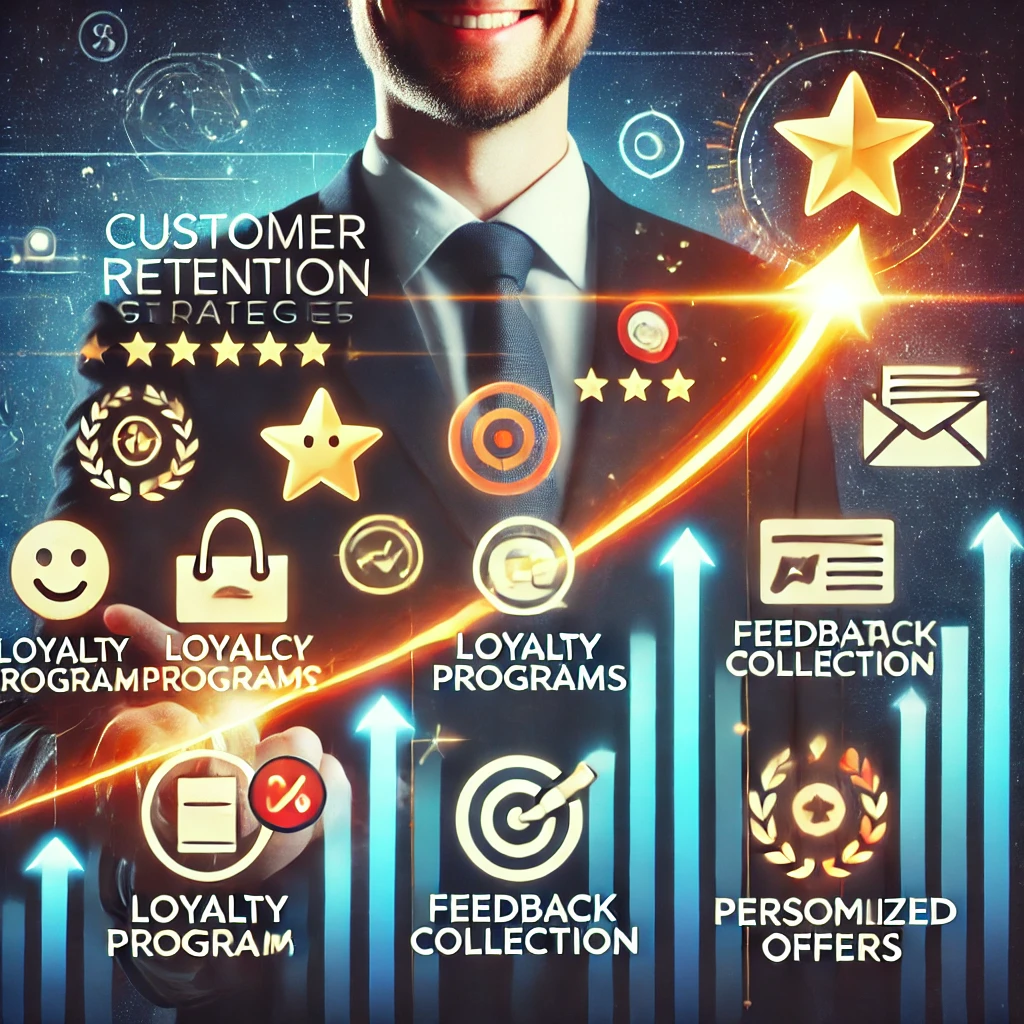Building a strong customer base is essential for any business, but retaining those customers is equally, if not more, important. While acquiring new customers is often more expensive, customer retention allows businesses to maximize the lifetime value of existing customers, improve profit margins, and foster customer loyalty. Here are some powerful customer retention strategies that will help you increase profits and grow your business.
1. Provide Exceptional Customer Service
Excellent customer service is the cornerstone of customer retention. Satisfied customers are more likely to return to your business, recommend it to others, and remain loyal over the long term.
Steps to Implement:
- Train your team: Ensure that your customer service team is well-trained and equipped to handle inquiries, complaints, and feedback professionally and efficiently.
- Be responsive: Respond to customer inquiries and concerns quickly, whether they come through phone, email, or social media.
- Personalize the experience: Show customers you value their business by addressing them personally and remembering their preferences.
Pro Tip: Implement a customer feedback system to identify areas for improvement and resolve issues before they escalate.
2. Leverage Loyalty Programs
Loyalty programs incentivize repeat purchases and reward long-term customers for their continued business. Offering discounts, exclusive deals, or points for every purchase can encourage customers to keep coming back.
Steps to Implement:
- Create tiered loyalty programs: Offering different levels of rewards based on customer spending habits can motivate customers to increase their engagement.
- Offer referral rewards: Encourage customers to refer others by offering both the referrer and the new customer a discount or reward.
- Use data to personalize rewards: Track customer purchases and offer tailored rewards based on their shopping preferences.
Pro Tip: Make it easy for customers to sign up and participate in loyalty programs, and regularly communicate with them about their progress toward earning rewards.
3. Engage Customers Through Personalization
Personalizing customer interactions is a proven method for increasing retention. When customers feel recognized and understood, they are more likely to stick with your brand.
Steps to Implement:
- Segment your audience: Use customer data to divide your audience into segments based on preferences, behavior, and purchase history.
- Tailor communications: Use email marketing, SMS, or push notifications to send personalized messages and offers to different customer segments.
- Utilize AI and automation: Automate personalized recommendations based on browsing behavior or previous purchases, similar to how Amazon or Netflix recommend products or content.
Pro Tip: Personalization should feel organic and relevant, not intrusive. Be thoughtful about how you use customer data to build personalized experiences.
4. Deliver a Seamless Omnichannel Experience
Today’s consumers interact with brands across multiple channels, including websites, social media, email, and physical stores. Ensuring that customers have a consistent and smooth experience across all touchpoints is essential for building loyalty.
Steps to Implement:
- Unify your communication channels: Integrate your CRM with customer service, marketing, and sales platforms to track and manage interactions across channels.
- Offer consistent branding: Make sure your messaging, branding, and customer experience are consistent whether customers engage with you online or offline.
- Enable cross-channel shopping: Allow customers to browse online and pick up in-store, or make it easy for them to return online orders in physical locations.
Pro Tip: Customers should be able to transition seamlessly between channels without having to re-explain their issue or re-enter information.
5. Collect and Act on Customer Feedback
Listening to your customers is one of the most effective ways to improve retention. Regularly collecting feedback allows you to identify pain points and address them quickly, improving the overall customer experience.
Steps to Implement:
- Use surveys and polls: Send post-purchase surveys or periodic feedback requests to understand how customers feel about your product or service.
- Monitor online reviews and social media: Keep an eye on customer reviews on sites like Google and Yelp, as well as social media comments.
- Act on feedback: Demonstrate that you’re listening by implementing changes based on customer feedback and publicly acknowledging the improvements.
Pro Tip: Make leaving feedback simple and incentivize customers to provide it by offering small rewards, such as discount codes.
6. Implement a Customer Education Program
Educating your customers about how to use your products or services effectively increases satisfaction and reduces churn. Customers who fully understand your product are more likely to get value from it and continue purchasing from your business.
Steps to Implement:
- Create tutorial content: Offer video guides, webinars, or blog posts that show customers how to use your products effectively.
- Host Q&A sessions: Regularly engage with your customers by hosting live Q&A sessions where they can ask questions and receive real-time answers.
- Onboarding programs: For subscription services or complex products, implement onboarding programs that guide customers step-by-step through the setup and use process.
Pro Tip: Proactively educate customers on how to get the most out of your product or service. This decreases the likelihood of churn caused by misunderstandings or poor experiences.
7. Offer a Subscription Model
A subscription model offers consistent revenue while ensuring customers return on a regular basis. It’s particularly effective for businesses offering consumable goods or services.
Steps to Implement:
- Create a value proposition: Offer incentives for customers to subscribe, such as discounted prices, free shipping, or exclusive products.
- Provide flexibility: Let customers pause or cancel subscriptions easily to reduce the chance of dissatisfaction and cancellations.
- Offer tiered subscription levels: Allow customers to choose different subscription plans based on their needs or preferences.
Pro Tip: Subscription models work best when customers feel like they’re getting continual value from the product, so focus on delivering consistent quality and service.
8. Stay in Touch with Follow-Up Communications
Don’t let your customers forget about you. Regular follow-ups keep your brand top-of-mind and provide opportunities to re-engage customers with new offers, updates, or personalized recommendations.
Steps to Implement:
- Send post-purchase thank yous: A simple thank-you message after a purchase goes a long way in building goodwill.
- Offer re-engagement incentives: If a customer hasn’t purchased in a while, offer them a discount or special offer to encourage them to return.
- Automate email campaigns: Use email marketing automation to send follow-ups, such as product recommendations or reminders about an abandoned cart.
Pro Tip: Avoid overwhelming your customers with too many communications. Tailor your follow-ups to each customer’s interaction history and preferences.
Conclusion
Customer retention is a key factor in growing a sustainable and profitable business. By providing exceptional service, personalizing interactions, offering value through loyalty programs, and ensuring seamless omnichannel experiences, you can significantly improve your retention rates. Implementing these strategies not only helps retain your customers but also turns them into loyal advocates who can drive new business through referrals and positive reviews.










Cursus ultrices ligula nam eget, conubia id proin mauris purus platea porttitor ultrices nisi pretium per laoreet conubia. Litora. Pharetra.
Inceptos vehicula. Auctor potenti ut Fermentum donec mi metus montes hac. Cubilia blandit donec nam posuere neque tincidunt eu fames.